History of Wing Chun
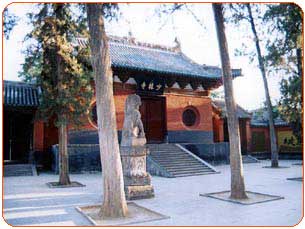
The Shaolin Temple stands today in the shadow of Song Mountain
The history of Wing Chun Kung Fu prior to the Red Junk generation remains shrouded in legend. The most popular account, which traces back to the famous Shaolin Temple, intertwines with the legends of several other styles of kung fu such as Bak Mei (White Eyebrow), Wu Mei (Five Plums), and Hung Gar.
In 1644, Manchurian invaders from northern China penetrated the Great Wall with the help of a treacherous Chinese general. Capturing Beijing, the Manchus ousted the ruling Ming, and established the Qing Dynasty. While they went on to control the rest of China, anti-Qing sentiment continued over much of their 267 year rule. Renowned for its kung-fu, the Shaolin Temple became a haven for many anti-Manchurian rebels. Enlisting the aid of a traitor Monk, the Government sacked the Shaolin Temple in the mid 1700s (Other accounts say that it was the southern Shaolin Temple in Fujian Province, and not the one in Henan Province which still stands today). Four monks and one nun escaped the devestation, bringing with them their formidable martial arts skills; many styles of kung-fu trace their lineage to these "five ancestors."
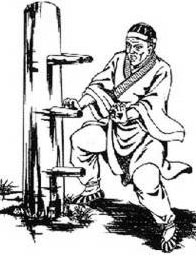
A drawing of the nun, Ng Mui
Resettling in the southern province of Guangxi, Ng Mui came to know a Tofu seller, Yim Yee. At the time, his beautiful daughter Yim Wing Chun had caught the attention of a local bandit, who thought he could bully her into marriage. However, Wing Chun had already been betrothed to a merchant and anti-Qing revolutionary Leung Bok-Lao, who was away on a long journey.
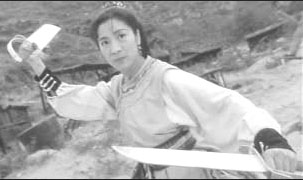
Yim Wing-Chun, as portrayed by Michelle Yeoh in the Hong Kong flick, "Wing Chun"

Donny Yen plays Leung Bak Chau in "Wing Chun"
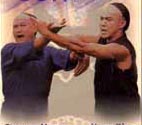
Wong Wah-Boh (Sammo Hung) and Leung Jan (Yuen Biao) in the HK classic, "Prodigal Son."
Two of the Red Junk performers were the stout and powerful Wong Wah-Boh and the quick and nimble Leung Yee-Tai. Both contributed to the training of Leung Jan, a pharmacist who owned a shop on Chopsticks Street in the famous city of Fatsan in Guangdong Province. Learning direct attacks from Wong and side attacks from Leung, Leung Jan became known as the "Kung Fu King of Wing Chun."
Besides his own sons, Leung Jan taught Chan Wah-Shun, a money changer in Fatsan. According to some accounts, Leung's sons were smaller and learned the angling side attacks inherited from Leung Yee-Tai; meanwhile, The enormous Chan Wah-Shun specialized in the direct and punishing approach passed down from Wong Wah-Boh. After Leung Chan retired and moved to his ancestral village of Gu Lao, Chan Wah-Shun began teaching in Foshan.
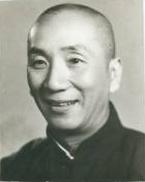
Grandmaster Yip Man
It so happened that Chan Wah-Shun taught in the spacious Mulberry Gardens, the ancestral home of the prosperous Yip family. Yip Man, the son of the Yip's, begged Chan Wah-Shun to teach him, and became his 12th and final student at a very young age. After Master Chan passed on, his senior-most student Ng Chung-So helped the young Yip Man continue his training. At the age of 16, Yip moved to Hong Kong to enroll in school. Although quite small, he could still use the Chan Wah-Shun's direct style to overcome bullies. However, on one occasion, he was soundly defeated by an older gentleman, who was able to redirect and neutralize all of Yip's powerful attacks. This man, Leung Bik, was the son of Leung Jan. He later taught Yip Man the angling approach.
After Yip man moved back to Fatsan, the WWII broke out. His family lost much of their fortune to the ravages of war. Despite ultimately winning the war, the Nationalist Chinese government was defeated by the communists. Fearing retribution, Yip Man fled to Hong Kong. It was here that he first started teaching openly, and it was the first time that Wing Chun would be introduced to the public.
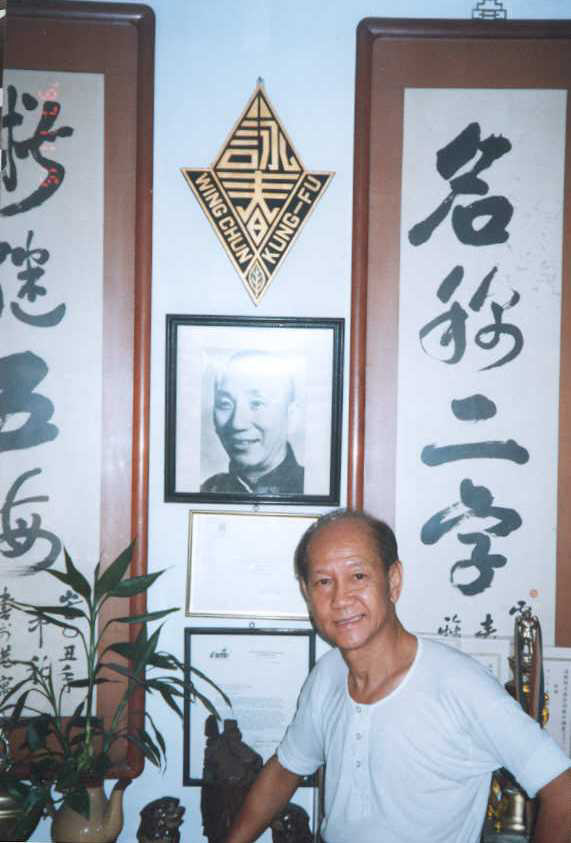 Sifu Lo Man Kam
Sifu Lo Man Kam
Grandmaster Yip Man started teaching publically in Hong Kong in 1950 to Leung Sheung and Lok Yiu, calling his style "Foshan Fist," since "Wing Chun Fist" sounded too feminine. When his newphew Lo Man Kam joined the class as the third student, he was the first to point it out as "Wing Chun." This first group of students, along with Yip Bo-Ching and Chu Shang-tin, became some of the leading teachers of Yip Man's style. Other early students such as Wong Sheung Leung, Hawkins cheung, Bruce Lee, William Cheung, and Duncan Leung were among the best fighters of the clan who helped Wing Chun become famous in Hong KOng.
In 1960, Sifu Lo moved to Taiwan to work in the military. After retiring in 1975, he started to publically teach Wing Chun there. His first students included Bruce Cheng and Chien Yen, both now prominent teachers in New Zealand and Japan, respectivelly. This first group of students were fighters, and proved themselves in full contact Lei Tai competition. Other famous students include actress Bridgitte Lin Ching-Hsia, Singers Samuel Tai and Elva Hsiao, and the Sultan of Brunei.
